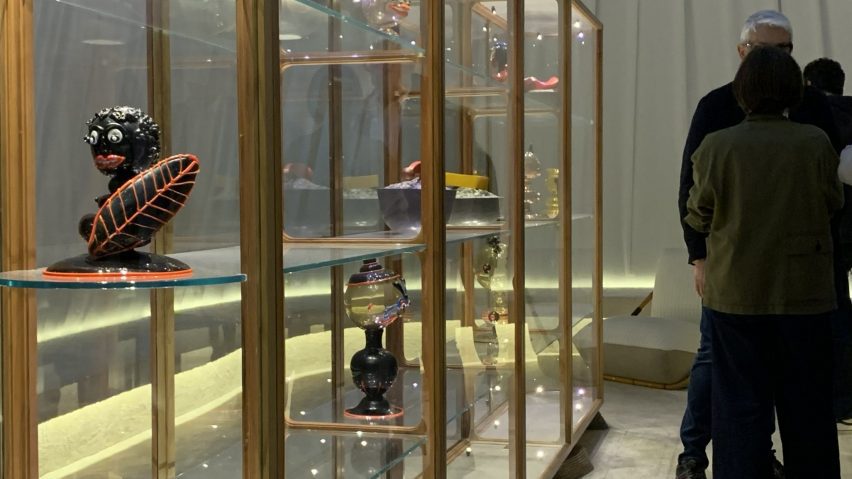
Milan design week marred by "racist figurines" say designers
A collection of glass figures presented by architect Massimo Adario within the Campo Base exhibition should not have been displayed at Milan design week say designers including Stephen Burks and Anava Projects.
In a series of posts on Instagram, Burks and curator Anava Projects as well as PR agency Hello Human criticised the exhibition, which took place as part of Milan design week's fuorisalone events, for displaying a "collection of glass figures embodying racist stereotypes".
"Milan design week 2023 was marred by an exhibition entitled Campo Base, which included a collection of glass figures embodying racist stereotypes," said the post shared by Burks, Hello Human and Anava Projects.
"Such 'decorative motifs' have a long and shameful history in our field. It was shocking to see this history so casually evoked in a contemporary design project."
View this post on Instagram
Burks, Hello Human and Anava Projects criticised the exhibition on Instagram
The pieces were included in a display called Il Collezionista, which translates as The Collector, that was created by architect Adario and curated by Federica Sala.
Displayed in a glass case set at the centre of a tented space, the figurines were intended to be a hypothetical collection of objects gathered by fictional collector of Meissen porcelain Kaspar Utz – the protagonist of the novel Utz, which was written by British author Bruce Chatwin and published in 1988.
Objects "derived from an unequal system of cultural exploitation"
However, African-American designer Burks believes that the figurines sent an "unfortunate message" about the inclusiveness of the global design community.
"The unfortunate message this exhibition has sent is that people of non-European origin do not have the right to exist outside of a Eurocentric, often racist, frame of reference," Burks told Dezeen.
"We must acknowledge that the historical objects on display in the exhibition originated from violence," he continued. "We must understand how their creation in the 1920s was derived from an unequal system of cultural exploitation borrowing directly from European colonial practices of dehumanising 'othering'."
The display was created as part of the wider Campo Base exhibitions which was curated by Sala and included work by six architecture studios – Massimo Adario, Giuliano Andrea dell'Uva, Eligostudio, Marcante-Testa, Hannes Peer and Studiopepe.
"How could something like this happen?"
Along with their criticism of the show itself, Burks and Anava Projects questioned how these figurines had made it into the exhibition in the first place and why it had drawn so little attention.
"Our first question is how could something like this happen at Milan design week in 2023?" continued the post.
"Furthermore, how can it be that the media and design influencers have portrayed this show as a 'must see'? And how have the racist figures not shown up or been condemned on social media until now."
Burks and Anava Projects hope that the figurines will prompt a discussion about racism in the design world and popular culture.
"What has become very apparent from various conversations we have had with various people in our industry, is that many still do not understand why these figures are so deeply offensive," it continued.
"There is a clear lack of communication and dialogue happening within the design industry, something we desperately need all roles within the industry to work on in order for this not to happen again."
"After the eye-opening events of 2020, it seems like our industry has become complacent and this is why something like this has been allowed to happen."
Dezeen contacted Adario and Sala for comment, but did not receive a reply before publication.
Update: Following publication Adario responded to Dezeen with an apology as did Sala.
"It was absolutely not my intention to inflict harm nor offence," Adario told Dezeen. "I invite anyone who has suffered to engage with me to help me understand the different worlds and cultures from which each of us comes in the belief that only knowledge and empathy are the true antidote to racism."
The photography is by Stephen Burks.